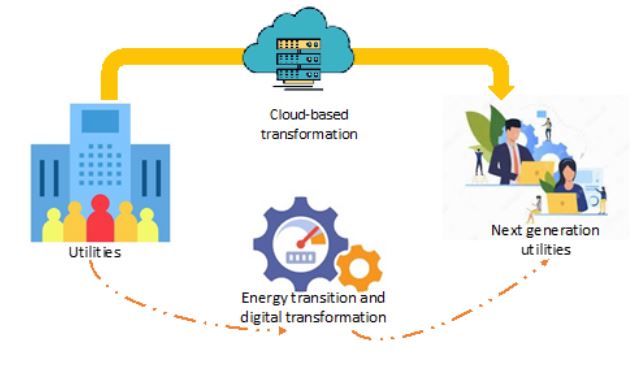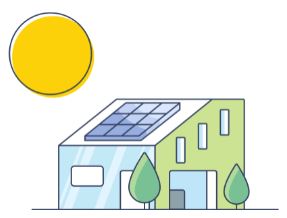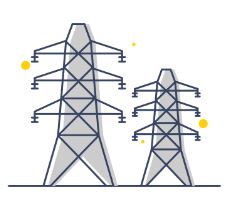State-of-the-art technologies are leveraging cloud computing to transform many industries and business models. Utilities have found ways to use this technology for their benefits while adapting to new challenges.

As the world goes through a vast energy transition, utilities stand in the center of attention, as governments, environmental organizations, and their customers continue to add pressure to meet ever-changing expectations. Customers expect their utilities to deliver an outstanding customer experience (CX) while resting assured that their information is being handled with the highest security standards. On top of these expectations, organizations are experiencing digital transformations that require them to think outside the box and plan their operation in the most efficient way. All these challenges represent a burden for service providers’ IT infrastructure and often imply increasing processing and storage capacity to keep up with the demand. This strategy is not recommended due to the high costs involved in developing and maintaining a robust, scalable, and secure IT infrastructure.
As the world goes through a vast energy transition, utilities stand in the center of attention, as governments, environmental organizations, and their customers continue to add pressure to meet ever-changing expectations. Customers expect their utilities to deliver an outstanding customer experience (CX) while resting assured that their information is being handled with the highest security standards. On top of these expectations, organizations are experiencing digital transformations that require them to think outside the box and plan their operation in the most efficient way. All these challenges represent a burden for service providers’ IT infrastructure and often imply increasing processing and storage capacity to keep up with the demand. This strategy is not recommended due to the high costs involved in developing and maintaining a robust, scalable, and secure IT infrastructure.
Moving to cloud could result in USD$70 to $168 million in annual savings [1].
Cloud computing under a SaaS model offers applications that can be accessed via a browser, which relieves organizations from duties such as software maintenance, infrastructure management, network security, and data availability. PaaS models provide access to a cloud-based environment in which users can build and deliver applications without the need of installing and maintaining complex desktop IDEs (Integrated Development Environments), which are usually very expensive. Finally, IaaS models offer computing capabilities (storage network, processing capacity, etc.) for a certain amount of time, when companies do not need to take care of the infrastructure.
With any of the options mentioned above, utilities can start moving towards digitalization, lowering the cost of ownership, and creating additional business cases in which customer experience (CX) levels are elevated. To keep up with their customers’ demands, service providers have added customer-facing features to their legacy systems, increasing operational complexity and harming CX.
At the same time, organizations can easily transition to renewable energy, which has been promoted by many governments to achieve decarbonization in the energy sector. In fact, in the US, 78 % of investor-owned utilities have set targets in CO2 emission reductions and 40 % have net-zero or carbon-free electricity goals [2]. 92 % of power and utilities executives surveyed by Deloitte reported that their companies already had a plan or were developing a strategy to reduce reliance on fossil fuels [3]. Likewise, commercial and industrial corporations have started traveling the same path, which is putting more pressure on service providers to offer products and services that follow these goals and strategies.
Nevertheless, service providers have been buying new solutions with narrow scopes that cover specific functionalities to face their challenges instead of optimizing their IT architecture. Therefore, many issues, including burdensome integration complexities, are hindering utilities’ ability to grow continuously at the pace of the market.
How does cloud computing help utilities overcome these challenges?
Cloud technologies support utilities’ through today’s challenges by serving as a bridge between them and the technologies that are energy transition enablers, such as Internet of Things (IoT), Artificial Intelligence (AI), and Augmented Reality (AR). This link brings several opportunities and business cases that not only create competitive advantages in the market, but also empower companies to transform themselves into a more reliable and robust business. In other words, cloud computing is taking utilities to the next-gen of energy service delivery.

Some of the business scenarios and opportunities that have emerged during the energy transition, and have enabled the digitalization of service providers are:
 Since the energy revolution started, knowing how much energy can be produced through renewable sources has been very uncertain. This challenge is overcome with AI and machine learning, by connecting several information sources and processing it to produce accurate forecasts and optimize balance distribution.
Since the energy revolution started, knowing how much energy can be produced through renewable sources has been very uncertain. This challenge is overcome with AI and machine learning, by connecting several information sources and processing it to produce accurate forecasts and optimize balance distribution.
 Utilities’ operational costs can be significantly reduced when the maintenance of the electricity grid is carried out at the right time. With IoT sensors, service providers can monitor their infrastructure, foresee issues with its performance and prevent failures or avoid unnecessary scheduled maintenance.
Utilities’ operational costs can be significantly reduced when the maintenance of the electricity grid is carried out at the right time. With IoT sensors, service providers can monitor their infrastructure, foresee issues with its performance and prevent failures or avoid unnecessary scheduled maintenance.
 Not only can utilities use DER management systems to administrate their network, but they can also use these systems as CX boosters. Service providers can empower their clients to administrate their DER depending on the price of electricity or the low carbon emission at a certain moment by using AI-powered forecasts and dashboards. In this way, customers can decide the source from which they want to power their homes.
Not only can utilities use DER management systems to administrate their network, but they can also use these systems as CX boosters. Service providers can empower their clients to administrate their DER depending on the price of electricity or the low carbon emission at a certain moment by using AI-powered forecasts and dashboards. In this way, customers can decide the source from which they want to power their homes.
Solutions like these are easily delivered on the cloud, preventing utilities from incurring in the costs needed to support the processing capacity and infrastructure requirements of each cloud delivery model. Cloud technologies can transfer data at extraordinary speeds, no matter if it comes from field measurement, IoT devices, or other platforms, allowing service providers to achieve scalability and higher efficiency in their operation. Furthermore, cloud computing empowers companies with new possibilities to offer products and services like connected electric vehicles, customized energy programs, among others.
[1] Accenture, “Best of 2020. A collection of insights from Accenture Utility industry leaders.,” Accenture, 2020.
[2] Deloitte, “Deloitte Insigh,” 2020. [Online]. Available: https://www2.deloitte.com/us/en/insights/industry/power-and-utilities/utility-decarbonization-strategies.html.
[3] Deloitte, “Deloitte,” [Online]. Available: https://www2.deloitte.com/us/en/pages/about-deloitte/articles/press-releases/navigating-energy-transition-disruption-growth.html.
[4] Accenture, “What’s driving utilities to cloud?,” Accenture, 2018.







